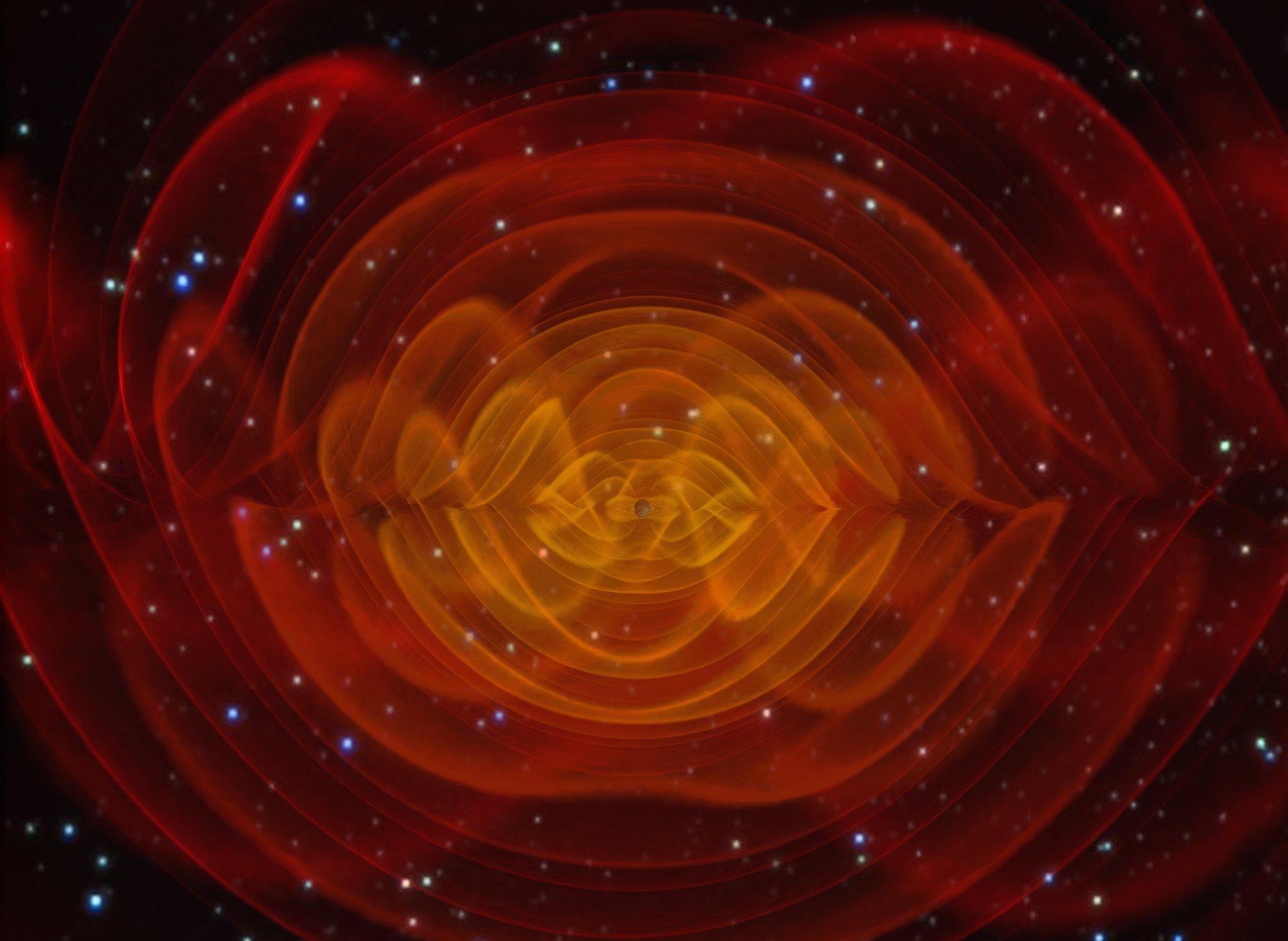Nobel-winning research could help us see almost all the way back to the Big Bang.

There was considerable ballyhoo this week as the Royal Swedish Academy announced that the Nobel Prize in physics would go to three Americans who were prime movers in the effort to design and build LIGO, the Laser Interferometer Gravitational-Wave Observatory.
This followed on the heels of an announcement that LIGO had, for the fourth time, detected the subtle flutter of space-time caused by a gravitational wave. This event, detected in August, is reckoned to have stemmed from the collision of two black holes, each weighing in at several dozen times the mass of the sun.
Most people go numb at repeated discoveries — anyone remember Columbus’ fourth expedition? But the circumstances of this detection are different. They foreshadow how sensing these esoteric phenomena might evolve from being an impressive technical triumph to an important way to understand the cosmos.
So what was different about this fourth event?
In a nutshell, the telescope got bigger. LIGO, which in 2015 became the first instrument to detect a gravitational wave, consists of two 2.5-mile-long L-shaped structures separated by 1,900 miles — one in Washington State and the other in Louisiana. They are sensitive beyond easy appreciation, able to measure changes in distance to one part in 10 billion billion. That’s akin to determining the separation of New York and San Francisco to a hundred trillionth of an inch.
But the thing is, the LIGO detectors are not “aimed” at any particular part of the universe. They pick up wiggles in space-time coming from anywhere. So when a gravitational wave is detected, they’re hard pressed to answer the obvious question: What caused that? To do so, we need to determine the source of the wave. What cosmic occurrence suddenly twisted space?
Fixing the direction of the wave’s origin is about as hard as figuring out where thunder is coming from (with your eyes shut). The difference in the arrival time of sound to your two ears will give you some idea, but it won’t be precise.
THIRD EAR
But now LIGO has metaphorically added a third ear, a sibling gravitational wave detector called VIRGO, whose L-shaped vacuum tunnels sprawl across agricultural land eight miles southeast of Pisa, Italy. (This is deliciously appropriate, given Galileo’s reputed use of Pisa’s famous leaning tower to demonstrate the universal acceleration of gravity.)
So now the arrival time of space-time ripples can be registered at a trio of detectors. It’s a setup that can be likened to systems deployed in crime-prone neighborhoods to locate gunfire by noting the arrival time of the sound waves at each microphone.
Adding VIRGO to LIGO has helped narrow the region of sky that contains the origin of a gravitational wave by about a factor of 10. A nice improvement for sure, but still not enough to pinpoint the source. However, VIRGO gives a hint of what’s to come. Where this whole story is going.
And where might that be? Let’s look ahead not just a year, but a few decades. Gravitational wave detectors are big and expensive. LIGO was the largest project ever funded by the National Science Foundation. Its detectors are exquisitely precise and finicky. But what might future technology allow? That’s hard to forecast. But if past is prologue, there will surely be reductions in the cost of detectors able to sense tiny vibrations in space-time.
A BARRAGE OF NEW INSTRUMENTS
So think about this: Galileo’s first telescope did, indeed, make some important discoveries. But it was just a prologue to the development of far better instruments that eventually told us what the universe was really like. So, too, might LIGO and VIRGO simply be the opening salvo in what will eventually become a barrage of new instruments.
The optical telescopes under construction today have 100,000 times the light-collecting power of Galileo’s device. It took four centuries for that to happen, but technology today proceeds rapidly. So what if we could build gravitational telescopes with thousands of times today’s sensitivity and with an ability to pinpoint sources? What would that get us?
For one, it would get us a solid confirmation of Einstein’s relativity theory, his blueprint for the large-scale structure of everything. The theory predicts that if you wave your hands in the air, you will generate gravity waves that will, at the speed of light, waft into space to eventually distort the separation of objects in the farthest galaxies. (Don’t get a swelled head about this. The distortion isn’t much!)
But gravitational waves can also tell us about events we cannot see, such as the catastrophic collision of orbiting black holes, the assumed cause of the gravitational waves found so far. This is, again, a window into fundamental physics.
ALL THE WAY BACK
Future instruments could clue us in to details of the Big Bang’s early days. With ordinary telescopes, we can see back only to within about 400,000 years of that boisterous birth before running into an opaque wall of bright light. But gravity waves can come to us from beyond the light barrier.
We could study the formation (and, obviously, the destruction) of black holes, or the details of stars that explode as they grow old.
All of that is enough to make anyone interested in the structure of the cosmos salivate. But of course, and as always, the most interesting things to be discovered by these new instruments are those that we don’t anticipate. The cosmos has never been short on surprise.
Gravitational wave astronomy: It’s not where it’s gone; it’s where it’s going.





